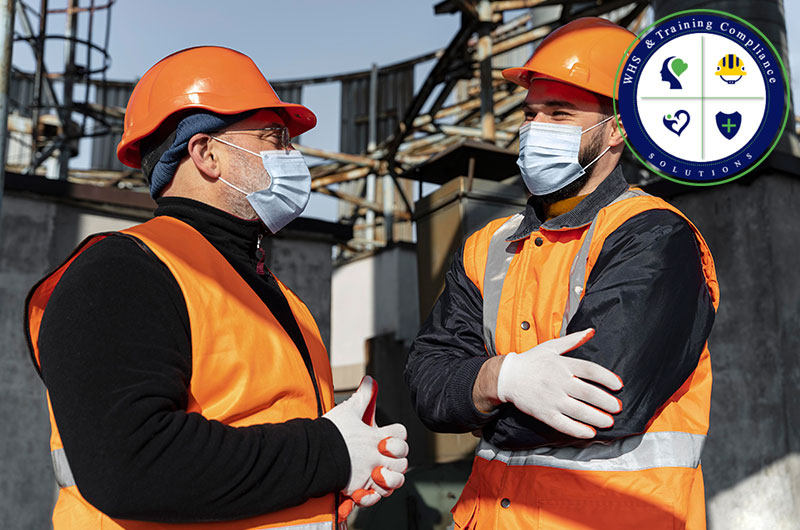Mental health has been gaining more ground as one of the crucial components of workplace wellbeing and safety. As awareness of mental health continues to grow, many Australian organisations are investing in structured support programs as well as training on psychological risk management at work.
This blog will spell out the most notable differences in identifying PFA from MHFA, the applications specific to both levels, the set course of training they offer, and how each impacts the quest for a mentally healthy workplace.
Understanding Psychological First Aid
PFA was meant to be implemented in contexts of disaster or emergency, such as natural disasters, serious accidents, or violent incidents. The recommendation to adopt PFA in such situations as a frontline response comes from the World Health Organisation and other global bodies.
Key Features of Mental Health First Aid:
- Timing: Applicable at the point when the signs of mental health issues show, and not specifically after a traumatic event.
- Setting: Applicable in all workplaces, schools, and community groups.
- Focus: Early detection, reduced stigma, and helping someone seek assistance.
- Training: Conducted using standard courses by accredited instructors, integrated into a work health and safety training course
MHFA training became one of the most instrumental courses towards a mentally healthy workplace. Many Australian employers incorporated the MHF Aid certificate into their wellbeing strategies or mental health action plans.
The Role of Organisation in Supporting Implementation
Successful implementation of either or both approaches cannot depend only on the staff attending a training session. It is the employers who play a crucial role in ensuring that the knowledge gained translates into real and meaningful support for employees.
From the very start, buy-in from leadership is essential. When senior management is seen to promote mental health systems, not only is this a practice in stigma reduction, but it is also a mainstay in the reinforcement of a psychological safety culture. Publicising pathways for staff to access PFA or MH-trained personnel increases system visibility and earns the trust of its employees.
This may also include reviewing internal policy and communication frameworks to guarantee that trauma-informed and mental health-aware principles govern them. Protocols that further define responses to everyday mental health challenges as well as emergency situations assure a fast, competent response from trained staff.
Both PFA and MH skills tend to wane in the presence of time unless there is some practice or a means to keep them sharp. To ensure retention of confidence and skill, peer discussions, communities of practice, or follow-up workshops should be encouraged.
Lastly, all the systems should have a feedback mechanism. By collecting feedback from the people who were supported or helped by programs over time, organisations will be able to adapt and refine their approach according to what works with and for their staff.
Comparison Between PFA and Mental Health First Aid
| Feature | Psychological First Aid | Mental Health First Aid |
| Purpose | They are known to provide immediate support after an incident. | Providing early intervention for preventing mental health issues |
| What is the Timing? | After the trauma or comparable incident has happened. | These are relevant whenever the symptoms of mental problems occur. |
| Training | These are short and practical, focused on a specific emergency. | These courses are known for their scenario-based learning, which is in-depth and structured. |
Relevance to Australian Workplaces
Continuing integration of mental health initiatives into ethical frameworks marks the beginning of the accepted norm for occupational health and safety in Australia. Employers are obliged under the Work Health and Safety Act 2011 to ensure a safe workplace, including dealing with risks concerning psychological health.
Integrating Mental Health First Aid into a work health and safety training course enables organisations to comply with the requirements while enhancing their capability towards resilience and productivity among employees.
Employees with Mental Health training are likely to notice warning signs in their colleagues and act appropriately, which can prevent more serious outcomes.
While not a legal requirement, PFA is of great value, especially in high-risk industries like construction, emergency services, transport, and mining. These jobs usually involve exposure to traumatic events or high-stress critical incidents, where PFA can make all the difference in a successful return to work and successful recovery.
Benefits of Mental Health First Aid:
- Reduction in stigma surrounding mental illness.
- Encouragement of help-seeking behaviour in the early stages.
- Supportive workplace culture.
- Confidently engage employees in conversations of a difficult nature.
Benefits of PFA:
- Stabilisation of individuals following impairment.
- Supports psychological safety after a crisis.
- Prevention of additional psychological harm.
- Trust and morale building in high-pressure teams.
Choosing the Best Type
The choice of whether to go for PFA or MHF Aid, or implement both, also depends on the specific requirements of the organisation:
- In the event of an ongoing mental health challenge, like anxiety or depression, or burnout in the workplace, MHF Aid is in line with training.
- Environments that expose the workforce to high risks or possible trauma, such as disaster recovery teams and emergency responders, PFA would be applicable to those contexts.
- So, for an overall workplace wellbeing strategy, a hybrid model comprising MHF Aid and PFA training would give very strong coverage.
Employers would consider risk factors, staff roles, and workplace culture in deciding which training they want to invest in. In most cases, however, HR and safety leaders usually combine both programs as part of a larger mental health framework.
Myths About PFA and MHFA
These methods are still not being met with the deserved acceptance, and thus, some myths feed into confusion concerning their applicability.
The most erroneous assumption is generally that the terms PFA and MHF Aid are interchangeable. Both do involve offering support; however, they take place in vastly different settings. PFA is not considered a classical mental health intervention and does not require identifying specific conditions or symptoms. It is intended as general emotional support after a traumatic event and rarely requires the identification of a formal diagnosis. In fact, the biggest error is believing that PFA could be used in the management of ongoing mental health issues; it is not meant for long-term care or repeated applications in non-emergency situations.
By contrast, it is still thought by some to mean that a person who has received MHF Aid training is somehow a counsellor or a mental health professional. That is another misconception. The MHF Aid prepares a person to offer support at the first instance, but not therapy. The aim is to recognise signs, start a helpful conversation and link the person to professional care. No expectation of treatment for mental health conditions is placed upon an MHF Aid-trained individual, only that they act as a conduit to the proper support systems.
Understanding each approach’s limits and envisaged use is essential, otherwise risks of overstepping roles and inappropriate applications in the workplace will rise.
Final Words
Mental health and wellness are no longer add-ons; they have become a core part of any modern health and safety work system. Understanding the difference between PFA and Mental Health First Aid will enable employers and employees to respond better to the psychological hazards posed by the work environment.
MHFA, as stated above, improves early identification and management of mental health problems, and fits into any WHS course. PFA, on the other hand, is very instrumental as immediate psychological assistance following traumatic events.
With the understanding of when to use these two tools and how to use them, Australian workplaces can develop safer, healthier, and more resilient workplaces where every individual in crisis and out of crisis situations can be supported.













